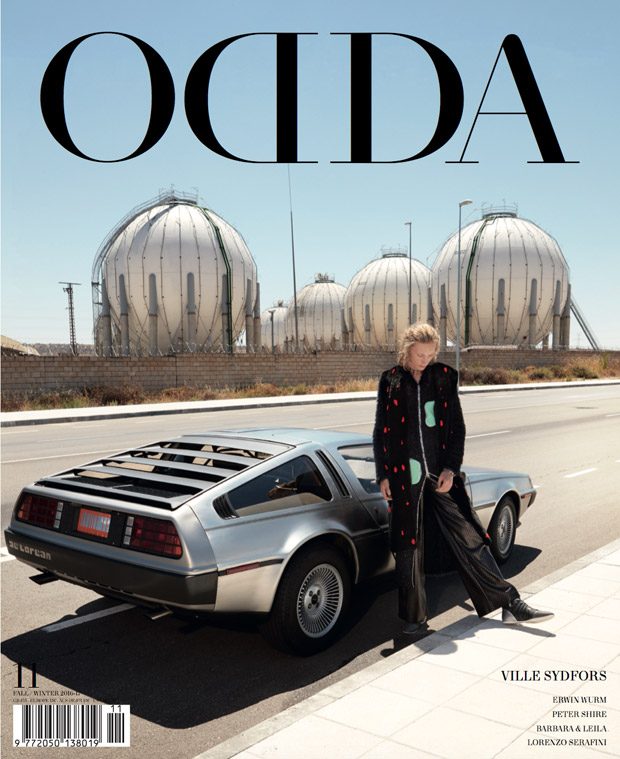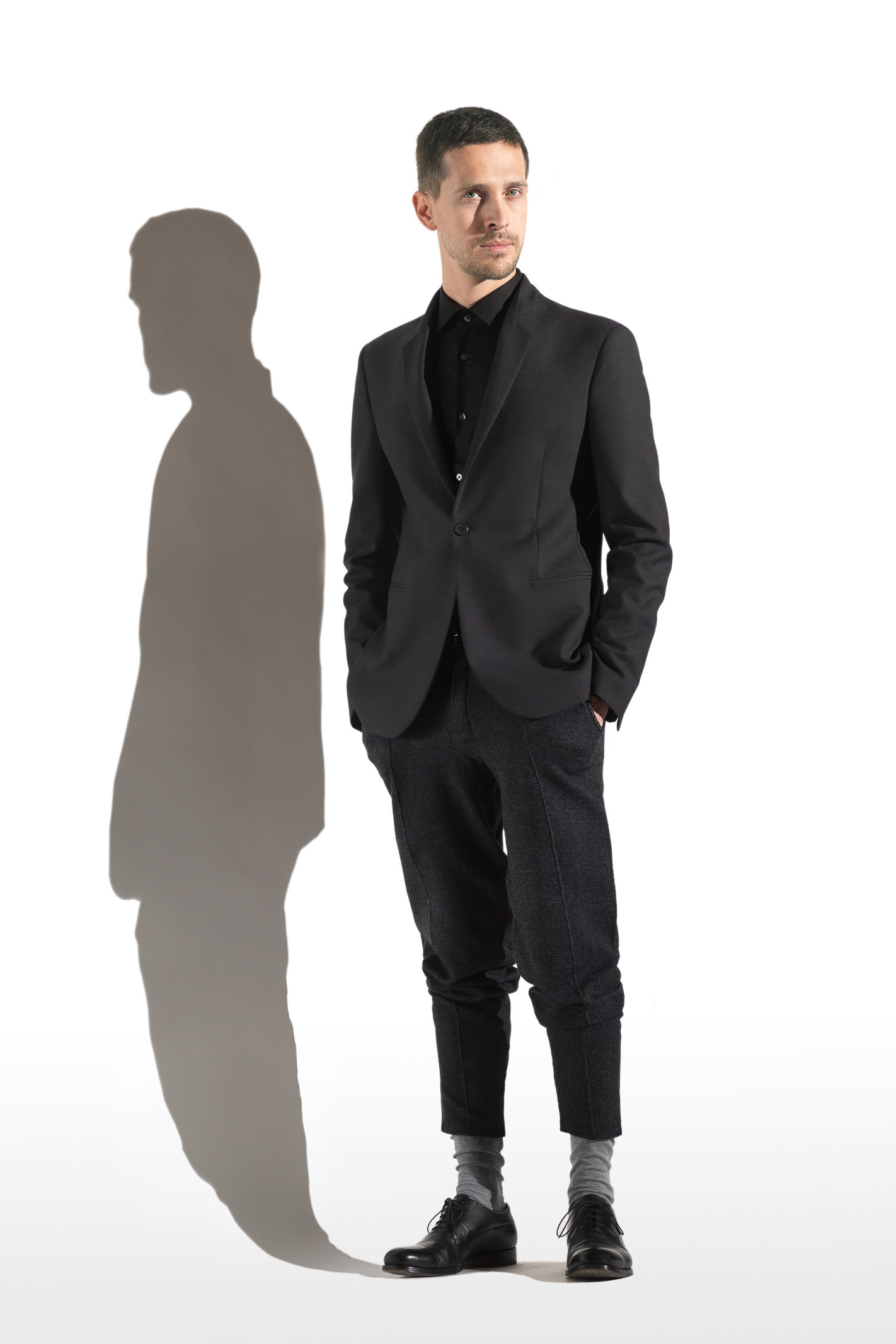
Interview
Antonino Cardillo, with Zurain Imam
Light is architectural. It is sculptural.
— Robert Wilson
Born in Sicily, Antonino Cardillo is considered one of the most important Architect of our era. After going to Rome and study Classical architecture, he has developed significant architectural works such as Nomura House in Japan or connected with Fashion as the boutique of Sergio Rossi in Milan. Antonino’s vision has been showcased in different museums worldwide such as V&A in London.
ZI: “Initially, what drove you to become an architect? Did you always see yourself designing and creating structures?”
AC: “I spent my adolescence playing fantasy video games such as Labyrinth, Zak McKracken, Ultima IV, Forgotten Realms and Dragonlance. These fictional worlds opened up my imagination, creating the premise to see architecture as a narrative. But at a certain point, I recognized video games as a distraction that were passive, and I suppose I was attracted by architecture for its concurrence between magic and reality.”
ZI: “You are originally from Sicily. When one looks at Sicily’s architectural heritage and culture, it is very eclectic—spanning from decorative structures, elaborate architectural forms, use of myriad materials and iconic mosaics. Did growing up there have a large influence in the way you design and view spaces?”
AC: “My youth was populated with symbols which came from an ancient past. My imagination was also moulded by the desires of people that inhabited the island long time ago. I think Sicily is more syncretic than eclectic. Since Greek colonization, the island society was an idiosyncratic representation of the complexity of the ancient world, a blend of far away cultures. I think that such a Dionysian setting specifically influenced my personal way to interpreting the classical epoch.”
ZI: “What is your most marked characteristic?”
AC: “I see architecture as an attempt to investigate forgotten meanings from the past. I am currently constructing an architectural codex which references to ideas of protection (the grotto) and eroticism (the arch). The grotto alludes to uterine protection and the arch to the phallus; both sacred origins of life. Thus such classical references, unconsciously seeded in the imaginations of people admonish us that other worlds also existed.”
ZI: “How would you describe your work process when you approach a project? Do you focus particularly on certain aspects of a project or is it an overall organic approach?”
AC: “Architecture should aim to interact with anthropological values, unveiling the stories concealed in places. Thus for me, the deepest sense of architecture is in its philosophical and literal connotations rather than technical or functional achievements.”
ZI: “From your drawing board to the final execution of construction, installation and production, what is the most challenging aspect in creating your final vision?”
AC: “It would be finding producers to make the architecture. Nowadays enlightened clients are rare since culture and wealth seem divorced. Moreover, since the final aim of the global market is the business exploitation of ideas, culture is continuously banalized. Thus the difficult challenge for an architect today is to find sensitive producers inside such a confused and superficial society.”
ZI: “Your work spans several countries such as the United Kingdom, Japan and Italy, which ushers the issue of context. How do you focus on adapting a design or building to its surrounding cultural context?”
AC: “As I said before, in most of the case, the place guides my work’s sensibility. I would say that each work of mine is the consequence of the place where it was constructed. Each work represents an investigation and emotional interpretation of the anthropological values of the site.”
ZI: “The aesthetic and formation of your designs simultaneously have a classical and minimalist touch. Do you purposely try to contrast these two together or is it an organic process?”
AC: “I spent nine years studying classic architecture in Rome and once there I wondered how I could convey the significance of classic heritage to our present day. For this reason I am currently engaged in defining an architectural codex compatible with the things we have at our disposal nowadays. Perhaps for such reason you can recognize a minimalistic touch in my work. But I see minimalism just as a syntax, not as a style.”
ZI: “In your work and designs you heavily introduce the theme and essence of the grotto, an almost experimental volcanic after-touch. The span of your work seems to dwell in the sensory: touch, smell and acoustics, the primal instincts of man. What are you trying to achieve when you create such spaces and textures?”
AC: “Since 2013, by constructing House of Dust in Rome, I renounced to the mies-en-scène of my narcissism that was characterized by the earlier computer-made projects of mine. Thus the House of Dust reminds us that architecture is mostly a physical experience. For such reason its vault refers to the grotto as a remembrance of the primordial home where our senses were refined. Grotto is also a constant of past architecture. It unveils to us symbols that are able to bring back the timeless space of myth into the present days.”
ZI: “There is a strong sense of a cultural backdrop and narrative when one views your architecture. In essence there is also an innate sense of time and journey when one looks at the spaces in your designs. Do you think it’s significant to vocalize the concept of narrative and the original idea of inspiration in the space in order to make it memorable and significant to the viewer?”
AC: “Architecture is a narrative. It should open up the imagination of individuals by establishing a durable dialogue, in the same way it happens with a novel, music or cinema. Actually, architecture is more rich as it includes symbolism and subtexts and architecture survives the time only if it succeeds in inhabiting the imagination of people.”
ZI: “Good architecture reflects purpose; style; a sense of time and emotion. What type of architecture do you strive to create?”
AC: “Style, sense of time and emotion are aspects of the same singularity. My idea of style is a consequence of the sense of time; and sense of time expresses the idea of the permanence of life across the ages. What matters to me is why elegance of architecture is able to survive beyond the ages.”
ZI: “Your work is quite distinctive, garnering success along with international acclaim and expansion. What do you make of it all and how do you envision the future of your company?”
AC: “If architecture is poetry then the lifestyle of an architect conditions the work he makes. I do not own an office. I am used to designing alone in beautiful places. I do not want to alter my freedom for a bourgeois status. The financial achievements of the company are irrelevant to me.”
ZI: “What do you think there is too much of or too little of?”
AC: “Architecture is a balance of parts. I do not see a place as having too little or too much.”
ZI: “What is your life mantra that you live by?”
AC: “When I am in doubt about something I often ask myself: ‘Would a countryman do it?’.”

Antonino Cardillo at Studio F38F in Milan, 2012. Photography: Mimo Visconti